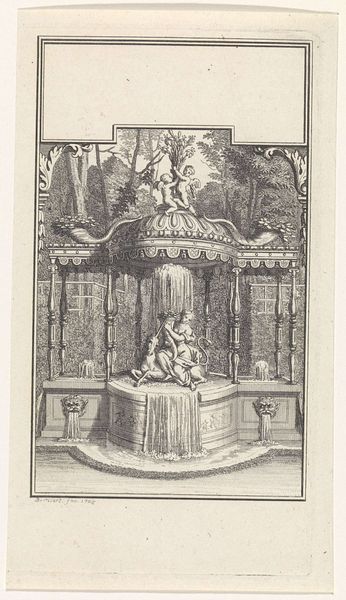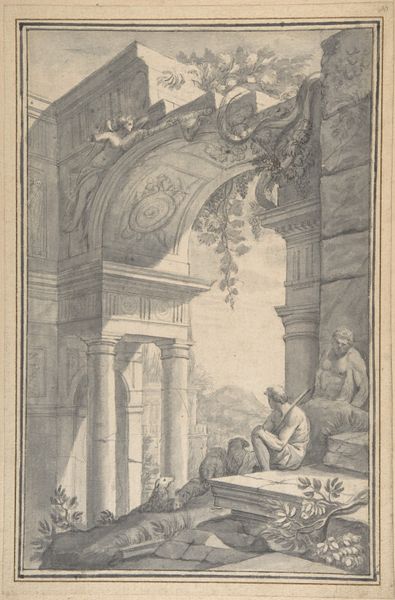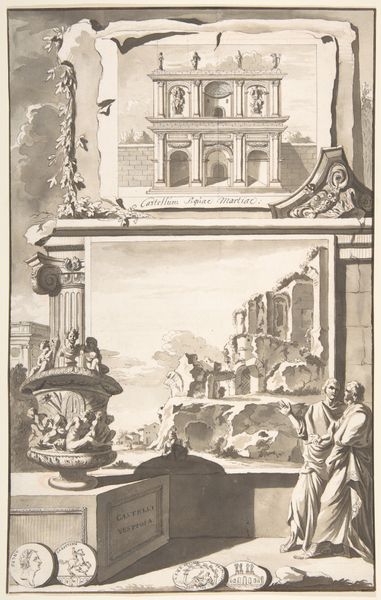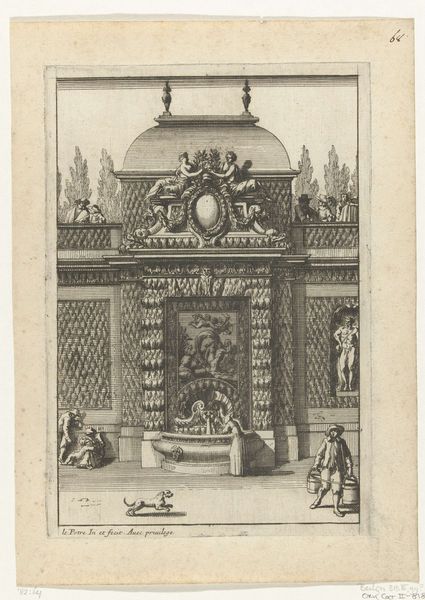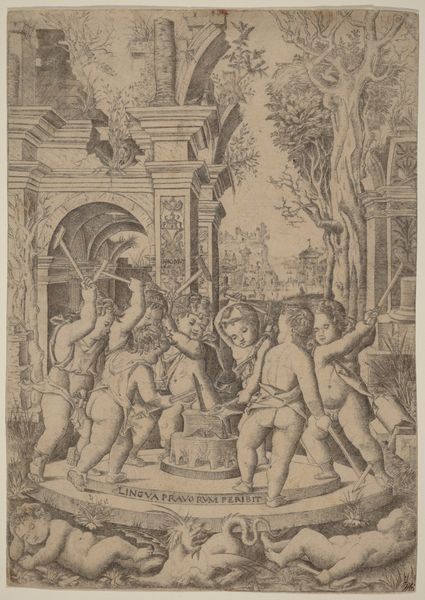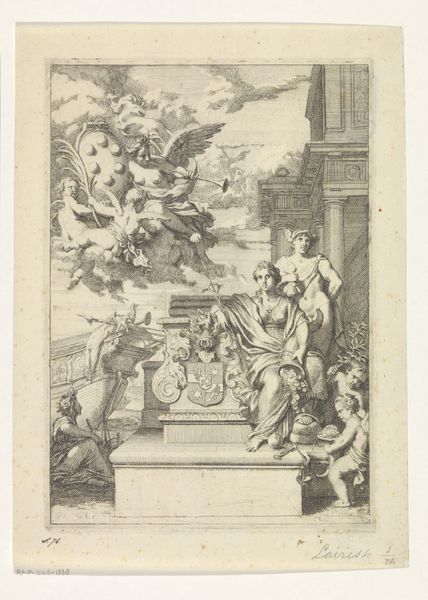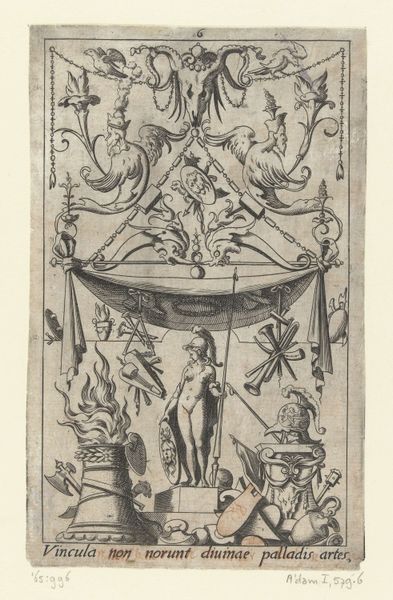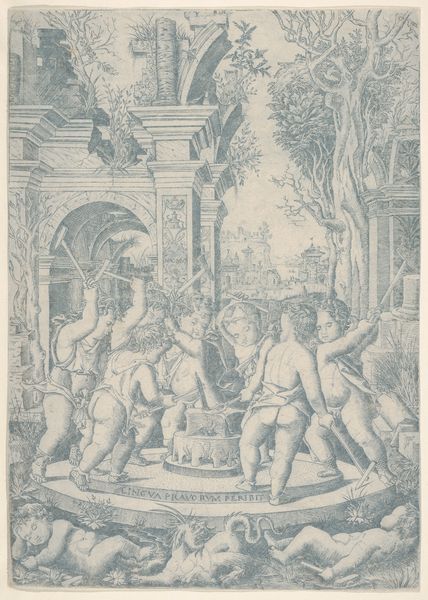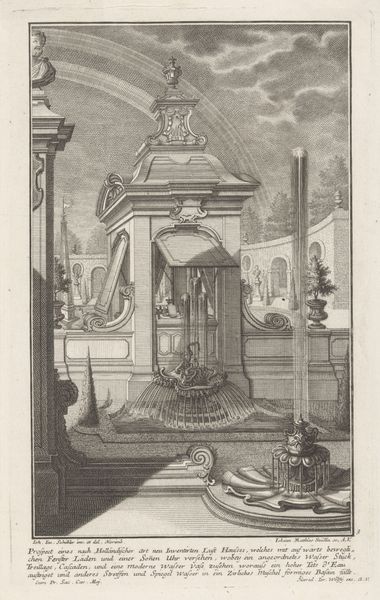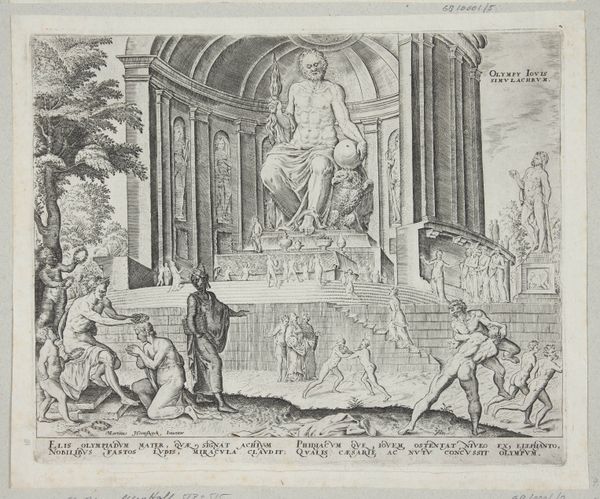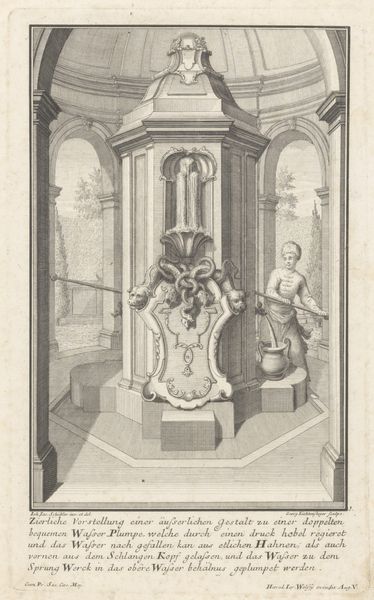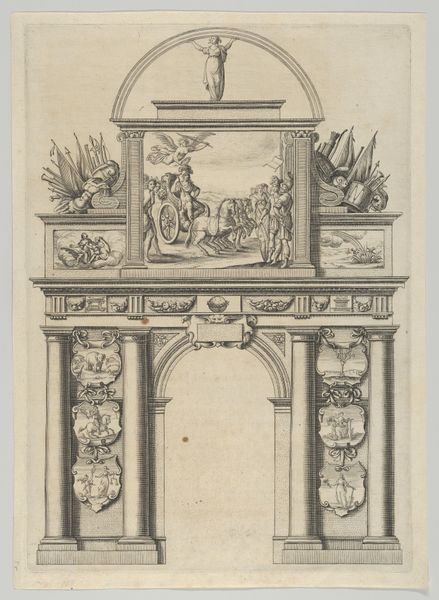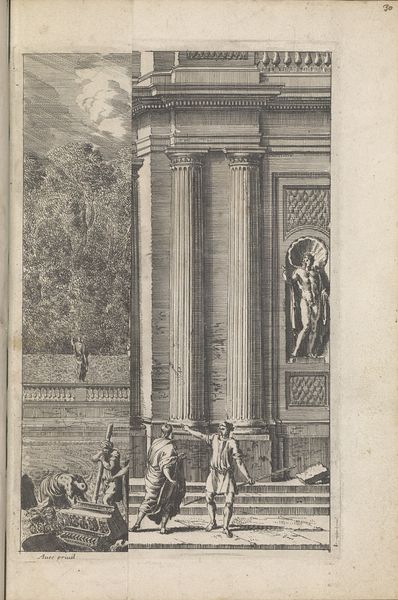
A Woman at a Fountain by a Ruined Temple, the Farnese Hercules in the Background 1726 - 1750
0:00
0:00
Dimensions: 14 1/4 x 9 3/8 in. (36.2 x 23.8 cm)
Copyright: Public Domain
Editor: This is "A Woman at a Fountain by a Ruined Temple, the Farnese Hercules in the Background," dating from between 1726 and 1750. It's a drawing made with pencil and etching. There's a classical feel to it, with figures by the fountain, but there's also this sense of decay with the ruins. What stands out to you? Curator: I notice immediately the focus on materiality. Look at the precise rendering of the stone, the careful differentiation between the smooth fountain and the rough, broken temple. This piece isn't just about depicting a scene, but about celebrating the physical properties of these materials and, by extension, the skill involved in representing them. The medium itself becomes the message. Editor: So, you're saying the artist wants us to appreciate the labor involved in making something like this, as well as the physical quality of the ruin? Curator: Exactly! Consider how the print medium democratizes the image. This image would've allowed wider access to depictions of classical art and architecture, impacting aesthetic values of the consuming classes. The "ruin" is also important. Was it seen as a warning or something that should be revived? Editor: I hadn't thought of the social context and broader consumption implications of printmaking, or ruins as political tools. Now it seems there's so much more than just some figures by a fountain! Curator: Yes. Consider too, that this kind of artwork flattens conventional hierarchical assumptions about creative mediums, merging ‘fine’ drawing practices with what could be considered print ‘craft.’ This blending of techniques prompts a further consideration about this artwork, and what constituted it as an 'artwork' back in its day. Editor: That makes me think differently about how art was produced and circulated back then. The art isn't just a representation of a place, but also an object embedded in networks of labor, consumption, and ideas.
Comments
No comments
Be the first to comment and join the conversation on the ultimate creative platform.
